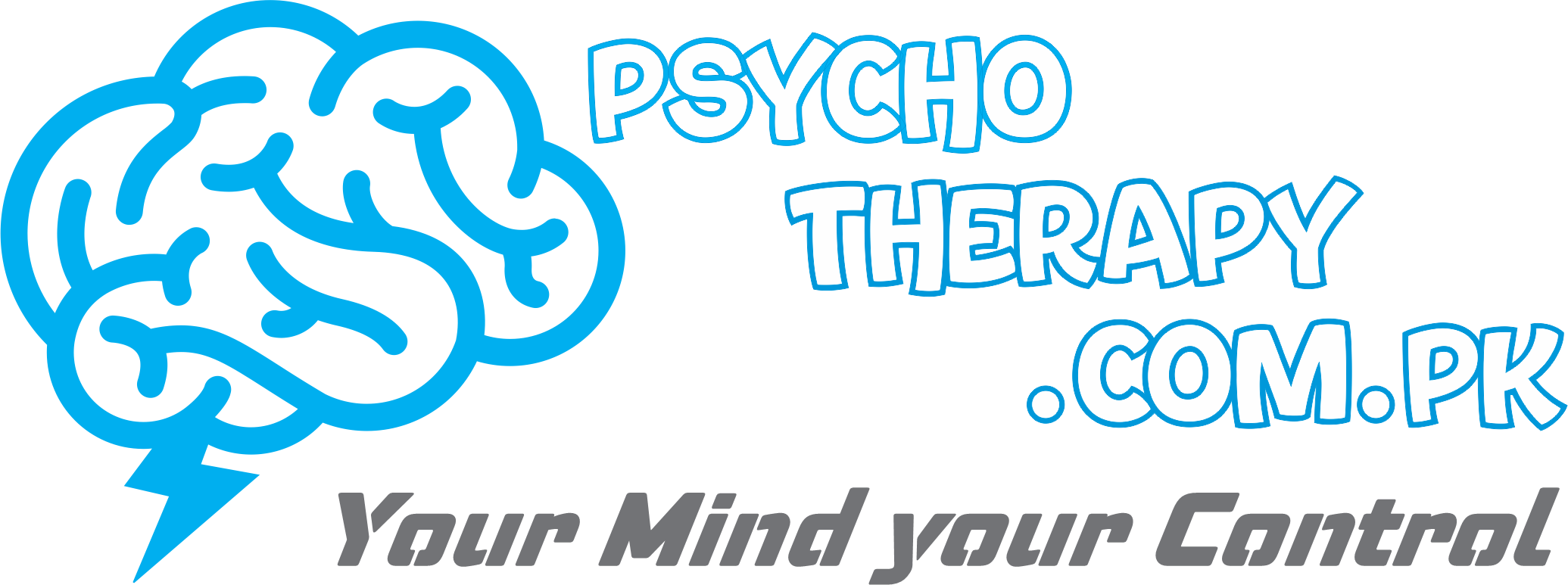Definition of Specific Learning Disorder
A Specific Learning Disorder (SLD) is a neurodevelopmental disorder that affects the acquisition and use of academic skills. Individuals with SLD typically experience difficulties in learning and using specific academic skills, despite having average to above-average intelligence and adequate opportunities for learning. These difficulties are not primarily due to intellectual disabilities, sensory impairments, or environmental factors.
Specific Learning Disorders can manifest in various areas, including reading (dyslexia), writing (dysgraphia), and mathematics (dyscalculia). For example:
Dyslexia: Affects reading and may involve difficulties with accurate and/or fluent word recognition, poor spelling, and decoding abilities.
Dysgraphia: Impacts writing skills and can lead to problems with handwriting, spelling, and expressing thoughts in writing.
Dyscalculia: Affects mathematical abilities and may involve challenges in understanding basic mathematical concepts, performing mathematical calculations, and solving math problems.
The specific characteristics and severity of SLD can vary from person to person. Diagnosing SLD involves assessing an individual’s cognitive abilities, academic skills, and ruling out other potential causes for the learning difficulties. Interventions and support strategies, such as specialized educational programs, are often implemented to help individuals with Specific Learning Disorders overcome their challenges and succeed academically. It’s important to note that SLD is a lifelong condition, but with appropriate support and accommodations, individuals can achieve success in their academic and professional pursuits.

History of Specific Learning Disorder
The understanding and recognition of Specific Learning Disorders (SLDs) have evolved over time as researchers and clinicians have gained insights into the complexities of learning difficulties. Here’s a brief overview of the history of Specific Learning Disorders:
Early Recognition (19th Century):
Learning difficulties, particularly in the areas of reading, writing, and mathematics, have likely existed throughout history. However, formal recognition and understanding of these difficulties began to emerge in the 19th century. Some early observations of what we now recognize as dyslexia, for example, were made during this time.
Dyslexia Research (Late 19th to Early 20th Century):
The term “dyslexia” was coined by Rudolf Berlin in 1887, who used it to describe a specific difficulty in reading. However, it wasn’t until the early 20th century that researchers like Samuel Orton and Anna Gillingham made significant contributions to the understanding of dyslexia. They emphasized the neurological basis of reading difficulties and laid the groundwork for later research.
Expansion to Other Areas (Mid-20th Century):
As research progressed, the understanding of learning difficulties expanded beyond dyslexia to include other specific areas of impairment, such as writing (dysgraphia) and mathematics (dyscalculia). This expansion led to the recognition of a broader category of disorders affecting various academic skills.
Inclusion in Diagnostic Manuals (Late 20th Century):
The formal inclusion of Specific Learning Disorders in diagnostic manuals solidified their status as recognized neurodevelopmental disorders. The Diagnostic and Statistical Manual of Mental Disorders (DSM) and the International Classification of Diseases (ICD) are two widely used manuals that have included criteria for specific learning difficulties.
Advancements in Research and Intervention (Late 20th Century to Present):
Advances in neuroscience, psychology, and education have contributed to a deeper understanding of the underlying mechanisms of Specific Learning Disorders. Researchers have developed effective interventions and strategies to support individuals with SLD, including specialized educational programs and assistive technologies.
Legal Protections and Educational Reforms:
Over time, legal protections, such as the Individuals with Disabilities Education Act (IDEA) in the United States, have been established to ensure that individuals with Specific Learning Disorders receive appropriate educational accommodations and support. These legal frameworks aim to promote equal opportunities for individuals with learning difficulties.
The history of Specific Learning Disorders reflects a growing awareness of the diverse challenges faced by individuals with learning difficulties and the ongoing efforts to provide them with the necessary support and resources for success.
DSM-5 Criteria of Specific Learning Disorder
The DSM-5 provides criteria for diagnosing Specific Learning Disorder (SLD), which is a neurodevelopmental disorder characterized by persistent difficulties in learning and using specific academic skills. The criteria are typically applied to difficulties in reading, writing, and/or mathematics. Here is a general overview of the DSM-5 criteria for Specific Learning Disorder:
A. Difficulties learning and using academic skills, as indicated by the presence of at least one of the following symptoms that have persisted for at least 6 months, despite intervention:
- Inaccurate or slow and effortful word reading (decoding)
- Difficulty understanding the meaning of what is read (reading comprehension)
- Difficulties with spelling
- Difficulties with written expression
- Difficulties mastering number sense, number facts, or calculation in mathematics
- Difficulties with mathematical reasoning
B. The affected academic skills are substantially and quantifiably below those expected for the individual’s chronological age, and they interfere with academic achievement or activities of daily living that require these academic skills.
C. The learning difficulties begin during school-age years, but the specific age at which they become noticeable can vary.
D. If a sensory deficit is present, the difficulties with academic skills are in excess of what would be expected.
It’s important to note that the DSM-5 recognizes that Specific Learning Disorder can manifest in different ways and may affect different academic skills in different individuals. The diagnosis involves a comprehensive assessment that considers the individual’s cognitive abilities, academic achievement, and the impact of any interventions.
Etiology of Specific Learning Disorder
The etiology of Specific Learning Disorder (SLD) is complex and multifactorial, involving a combination of genetic, neurobiological, environmental, and educational factors. Researchers continue to investigate the underlying causes of SLD to better understand its origins and develop effective interventions. Here are some key factors associated with the etiology of Specific Learning Disorder:
Genetic Factors:
- There is evidence to suggest a genetic predisposition to SLD. Individuals with a family history of learning difficulties may be at a higher risk.
- Twin and family studies have indicated a hereditary component, with a higher concordance rate for learning difficulties among identical twins compared to fraternal twins.
Neurobiological Factors:
- Structural and functional brain differences have been observed in individuals with SLD. For example, abnormalities in brain regions involved in language processing, reading, and mathematical abilities have been identified.
- Neurotransmitter imbalances and disruptions in neural networks may contribute to difficulties in acquiring and using specific academic skills.
Cognitive Factors:
- Deficits in cognitive processes such as phonological processing, working memory, and executive functions (e.g., attention, planning) are often associated with SLD, especially in the case of dyslexia.
- Differences in the way individuals process and manipulate information may impact their ability to acquire and apply academic skills.
Environmental Factors:
- Adverse environmental factors, such as exposure to toxins during prenatal development or early childhood, may contribute to the risk of SLD.
- Socioeconomic factors, including limited access to quality education and early intervention services, may also play a role in the development of learning difficulties.
Prenatal and Perinatal Factors:
- Complications during pregnancy or birth, such as prematurity, low birth weight, or prenatal exposure to substances, have been investigated as potential risk factors for SLD.
Educational Factors:
- Inadequate or inappropriate educational interventions may exacerbate learning difficulties. Early identification and intervention can significantly impact the trajectory of academic development.
- It’s important to recognize that Specific Learning Disorder is a heterogeneous condition, and its etiology can vary among individuals. Additionally, the interplay of genetic and environmental factors is complex, making it challenging to pinpoint specific causes for each case.
Early identification, comprehensive assessments, and targeted interventions are crucial for individuals with SLD. Understanding the multifaceted nature of the disorder can help educators, clinicians, and parents provide effective support and accommodations tailored to the individual’s needs.
Theories related to Specific Learning Disorder
Several theories have been proposed to explain the nature and underlying mechanisms of Specific Learning Disorder (SLD), particularly in areas such as reading (dyslexia), writing (dysgraphia), and mathematics (dyscalculia). These theories help researchers and educators understand the cognitive processes involved and guide the development of interventions. Here are some key theories related to Specific Learning Disorder:
Phonological Processing Theory:
This theory is particularly relevant to dyslexia, where individuals struggle with phonological processing—recognizing and manipulating the sounds of spoken language. Difficulties in phonological awareness, phonemic awareness, and rapid automatized naming are commonly observed in individuals with dyslexia.
Double-Deficit Hypothesis:
The double-deficit hypothesis suggests that individuals with dyslexia may have deficits in both phonological processing and rapid naming. These deficits can compound and contribute to difficulties in accurate and fluent word recognition.
Orthographic Processing Theory:
This theory focuses on the visual aspects of reading and writing, emphasizing the importance of recognizing and storing written words as whole units (orthographic representations). Difficulties in forming and accessing these representations may contribute to reading and writing challenges.
Visual-Attentional Model:
Proposed for dyslexia, this model suggests that individuals may have difficulties in visual attention and eye movement control, impacting their ability to efficiently process visual information during reading.
Magnocellular Theory:
This theory suggests that deficits in the magnocellular pathway, a visual processing pathway in the brain, may contribute to difficulties in tasks such as reading and spelling.
Executive Functioning Deficits:
Executive functions, including working memory, attention, and cognitive flexibility, are crucial for various academic tasks. Deficits in executive functioning have been associated with learning difficulties in reading, writing, and mathematics.
Cerebellar Dysfunction Theory:
Some theories propose that dysfunction in the cerebellum, a region of the brain associated with motor control and cognitive processing, may contribute to learning difficulties, especially in areas like coordination and mathematical skills.
Educational Neuroscience:
This interdisciplinary field combines insights from neuroscience and education to understand the neural mechanisms underlying learning and to develop effective educational interventions. It emphasizes the importance of tailoring teaching methods to individual learning profiles.
It’s important to note that these theories are not mutually exclusive, and different individuals with SLD may exhibit a combination of factors. Additionally, ongoing research continues to refine and expand our understanding of the complex nature of SLD. Effective interventions often draw from a combination of these theories to address the diverse cognitive processes involved in specific learning difficulties.
Risk factors of Specific Learning Disorder
Specific Learning Disorder (SLD) can be influenced by a variety of risk factors that may increase the likelihood of learning difficulties in individuals. It’s important to note that the presence of these risk factors does not guarantee the development of SLD, as the disorder is multifactorial and complex. Some common risk factors associated with Specific Learning Disorder include:
Genetic Factors:
Having a family history of learning difficulties, including dyslexia, dysgraphia, or dyscalculia, may increase the risk of SLD. Genetic predisposition can contribute to the heritability of specific learning difficulties.
Neurobiological Factors:
Structural and functional differences in the brain, including anomalies in regions associated with language processing, phonological awareness, and executive functions, may be risk factors for SLD.
Prenatal and Perinatal Factors:
Adverse events during pregnancy or childbirth, such as prematurity, low birth weight, exposure to toxins, or prenatal drug/alcohol exposure, may increase the risk of learning difficulties.
Environmental Factors:
Socioeconomic status can influence access to quality education and early intervention services. Individuals from lower socioeconomic backgrounds may face additional challenges that impact their academic development.
Early Language Exposure and Development:
Limited exposure to rich language environments during early childhood may impact the development of phonological processing skills, which are crucial for reading and writing.
Limited Educational Resources:
Inadequate educational resources, including lack of appropriate interventions and support for learning difficulties, can contribute to the persistence of academic challenges.
Learning Environment:
A lack of educational interventions tailored to individual needs, inappropriate teaching methods, or insufficient support in the classroom can exacerbate learning difficulties.
Attentional and Executive Functioning Deficits:
Difficulties in attention and executive functions, such as working memory and cognitive flexibility, can pose challenges for learning and academic achievement.
Psychosocial Factors:
Emotional or behavioral challenges, as well as low self-esteem related to academic struggles, may affect learning outcomes.
Gender:
Specific Learning Disorders are often identified more frequently in males than females, but this may be influenced by referral and identification biases.
It’s important to recognize that these risk factors are interconnected, and the presence of multiple factors may increase the likelihood of Specific Learning Disorder. Early identification and intervention, as well as a supportive and inclusive educational environment, can play crucial roles in mitigating the impact of these risk factors and promoting positive academic outcomes for individuals with learning difficulties.
Treatment for Specific Learning Disorder
The treatment for Specific Learning Disorder (SLD) typically involves a multidisciplinary approach, addressing the specific academic challenges faced by individuals in areas such as reading, writing, or mathematics. The goal is to provide targeted interventions that support learning and help individuals develop strategies to overcome their difficulties. Here are some key components of the treatment for SLD:
Educational Interventions:
- Specialized Instruction: Tailored educational programs that focus on the specific learning challenges (e.g., dyslexia, dysgraphia, dyscalculia) are essential. These programs may include structured literacy approaches, explicit instruction, and multisensory techniques.
- Individualized Education Program (IEP): In many cases, students with SLD may qualify for an IEP, a personalized plan that outlines specific educational goals, accommodations, and support services. The IEP is developed collaboratively between educators, parents, and relevant specialists.
- Accommodations and Modifications: Providing accommodations, such as extended time on tests, audio books, or assistive technology, can help level the playing field for students with SLD. Modifications may involve adjusting the curriculum to meet individual needs.
Speech-Language Therapy:
- For individuals with difficulties in phonological processing and language skills, speech-language therapy can be beneficial. This therapy aims to improve phonemic awareness, articulation, vocabulary, and language comprehension.
Occupational Therapy:
- Occupational therapy may be recommended for individuals with dysgraphia to address fine motor skills, handwriting difficulties, and other aspects related to written expression.
Behavioral Interventions:
- Behavioral strategies can be employed to address issues related to attention, motivation, and executive functions. This may include the use of positive reinforcement, self-monitoring, and organizational skills training.
Assistive Technology:
- Assistive technology tools, such as text-to-speech software, speech recognition software, and specialized learning apps, can help individuals with SLD access and process information more effectively.
Counseling and Psychosocial Support:
- Psychosocial support, including counseling and social-emotional interventions, can be important for addressing the emotional and social challenges that may arise due to academic struggles.
Parental Involvement and Training:
- Involving parents in the treatment process is crucial. Providing parents with information about their child’s learning disorder, teaching strategies, and ways to support their child at home can enhance the overall effectiveness of interventions.
Early Intervention:
- Early identification and intervention are key components of successful treatment for SLD. Intervening as early as possible allows for targeted support during critical periods of academic development.
It’s important to note that the specific interventions will depend on the individual’s unique profile of strengths and weaknesses. An interdisciplinary team, including educators, special education professionals, speech-language pathologists, and psychologists, may collaborate to develop and implement a comprehensive treatment plan. Regular assessments and adjustments to interventions based on progress are also essential to ensure ongoing effectiveness.
Therapies for Specific Learning Disorder
Therapies for Specific Learning Disorder (SLD) are designed to address the specific academic challenges an individual faces, such as difficulties in reading, writing, or mathematics. Different types of therapies may be recommended based on the nature of the learning disorder. Here are some common therapies used for SLD:
Orton-Gillingham Approach:
This is a structured, multisensory approach often used for individuals with dyslexia. It involves explicit and systematic instruction in phonics, decoding, and spelling, using tactile and kinesthetic methods to reinforce learning.
Structured Literacy Programs:
Programs that emphasize structured literacy provide systematic and explicit instruction in phonology, sound-symbol association, syllable instruction, morphology, syntax, and semantics. Examples include Wilson Reading System and Lindamood-Bell programs.
Multisensory Instruction:
Multisensory techniques engage multiple senses in the learning process, reinforcing the connections between letters and sounds. For example, using tactile methods, such as tracing letters in sand or using manipulatives, can enhance learning.
Speech-Language Therapy:
Speech-language therapy can address difficulties in phonological processing, vocabulary, and language comprehension. Therapists work on improving articulation, phonemic awareness, and overall language skills.
Occupational Therapy:
Occupational therapy may be beneficial for individuals with dysgraphia. Therapists focus on improving fine motor skills, handwriting, and other aspects related to written expression.
Math Intervention Programs:
Specialized math intervention programs are designed to address difficulties in mathematical skills. These programs often use hands-on activities, visual aids, and step-by-step instruction to improve understanding and application of mathematical concepts.
Cognitive-Behavioral Therapy (CBT):
CBT can be helpful in addressing emotional and behavioral challenges related to academic struggles. It focuses on identifying and changing negative thought patterns, improving coping strategies, and building self-esteem.
Executive Functioning Training:
Training programs targeting executive functions, such as working memory, attention, and organizational skills, can be beneficial for individuals with SLD. These programs aim to enhance cognitive processes essential for academic success.
Assistive Technology:
Assistive technology tools, such as text-to-speech software, speech recognition programs, and educational apps, can support individuals with SLD in accessing and processing information.
Parental Training and Support:
Providing parents with training on effective teaching strategies, ways to support their child at home, and information about the learning disorder can contribute to the overall success of interventions.
It’s important to tailor therapies to the specific needs and strengths of the individual with SLD. A collaborative and multidisciplinary approach involving educators, speech-language pathologists, occupational therapists, psychologists, and parents is often effective in developing and implementing a comprehensive treatment plan. Regular assessments and adjustments to interventions based on progress are also essential components of successful therapy for SLD.
Preventions of Specific Learning Disorder
Specific Learning Disorder (SLD) is a neurodevelopmental condition, and while it may not be entirely preventable, early interventions and certain strategies can help mitigate its impact and support individuals with learning difficulties. Here are some preventive measures and strategies:
Early Identification and Intervention:
Early identification of learning difficulties is crucial. Regular developmental screenings and assessments in early childhood can help identify potential challenges, allowing for timely intervention and support.
Educational and Supportive Environments:
Creating a positive and inclusive learning environment can contribute to the overall well-being of students. Implementing evidence-based teaching methods, using a variety of instructional materials, and promoting a supportive atmosphere can benefit all students, including those with learning difficulties.
Differentiated Instruction:
Teachers can employ differentiated instruction, tailoring teaching methods and materials to meet the diverse learning needs of students. This approach recognizes and accommodates variations in learning styles and abilities within the same classroom.
Universal Design for Learning (UDL):
UDL involves designing educational materials and environments that are accessible to all students, including those with diverse learning needs. Providing multiple means of representation, engagement, and expression enhances accessibility.
Phonological Awareness Programs:
Early intervention programs that focus on developing phonological awareness skills can be beneficial in preventing or addressing reading difficulties, particularly in the case of dyslexia.
Literacy-Rich Environments:
Encouraging literacy from an early age by promoting reading at home, providing access to a variety of books, and fostering a love for language and storytelling can contribute to language development and early literacy skills.
Parental Education and Involvement:
Providing parents with information about child development, learning milestones, and strategies to support their child’s learning can empower them to play an active role in their child’s education.
Speech and Language Support:
Early intervention by speech-language therapists can help address language and communication challenges, promoting the development of foundational skills important for academic success.
Social-Emotional Learning (SEL):
Incorporating SEL programs in schools can help students develop emotional resilience, self-awareness, and effective interpersonal skills. A positive emotional environment can positively impact learning outcomes.
Regular Monitoring and Assessment:
Implementing ongoing monitoring and assessment practices can help educators identify learning difficulties early on. Regular assessments allow for adjustments to teaching strategies and the provision of targeted support.
While it may not always be possible to prevent the onset of Specific Learning Disorder, these preventive measures can significantly improve outcomes for individuals with learning difficulties. Early intervention, supportive environments, and inclusive educational practices play key roles in addressing and mitigating the impact of learning disorders.










